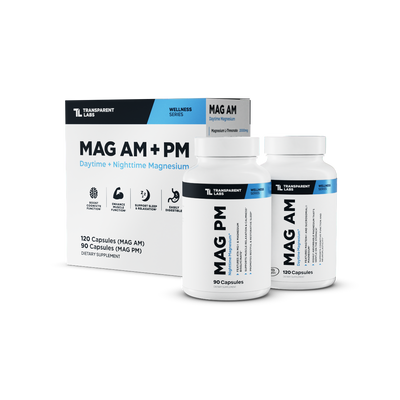5 Science-Backed Benefits of Sauna Use After Your Workout

Sitting in a wood-paneled room, sweating from places you didn't know could perspire may not feel like the best way to recover after a workout in the moment. But odds are you won't regret the natural endorphin high you get after stepping out of a sauna room.
There's some solid research out there showing that using the sauna benefits the entire body, from your heart to your mood and much more.
If you've been skeptical about whether saunas offer health benefits, here's your sign to sweat it out after your next tough workout. Below, we dive into all the health benefits of sauna bathing after a workout and some of the potential risks that can pop up if you take it too far.
Types of Saunas
There are three main types of saunas: dry sauna, steam sauna, and infrared sauna.
The most common types in commercial gyms are dry and steam saunas, but you'll also find infrared saunas in higher-end wellness spas and facilities.
These three types of saunas differ in the way they generate heat, which plays a role in their health benefits, according to Northwell Health.
Dry Saunas
Dry saunas promote lots of sweating and relaxation through high, dry heat exposure.
A traditional sauna, also known as a Finnish sauna, are wood-paneled rooms that use heated stones or electric heaters to raise the air temperature to around 176–212°F (80–100°C).
Dry saunas are low-humidity but hot — the dry air allows for higher temperatures. (Sometimes, though, you can splash the sauna rocks with water to increase the steam and humidity.)
Steam Saunas
A steam sauna, or steam room, uses moist heat generated by boiling water, creating a high-humidity environment at lower temperatures (around 110–120°F or 43–49°C).
The moist air causes the body to sweat but at a slower rate than a dry sauna. This environment can feel hotter — and also harder to breathe in — because of the humidity. The heat from a steam room doesn't penetrate as deeply into the body as in a dry sauna.
Infrared Saunas
An infrared sauna uses infrared light to directly heat the body without raising the air temperature much, to around 120–150°F or 49–65°C.
It's generally easier to sit through a session in an infrared sauna because it's not as hot. Infrared light rays penetrate deeper into the skin and muscles compared to traditional saunas, which may help with muscle recovery, detoxification, and relaxation without the intense heat of traditional saunas.

Each sauna affects the sweating process differently, with dry saunas promoting the most intense, immediate sweat; steam rooms offering a slower, more humid sweat; and infrared saunas giving you a milder, deeper sweat at lower temperatures.
The Health Benefits of Sauna After Workout
We can mostly chalk up the benefits of sweating it out in a sauna to the heat exposure it provides. Here's what the most up-to-date research tells us about what sauna-ing can do for us.
1. Promotes Muscle Recovery
Heat therapy helps reduce post-exercise muscle soreness and improves blood circulation, but infrared may be the name of the recovery game here.
Research shows that infrared saunas help the muscles recover after endurance training. Another study found that just one single sauna session improved recovery after a strength-training workout, and decreased muscle soreness and muscle pain the following day.
Researchers think that post-workout sauna therapy may help maintain muscle temperature, improve circulation, and reduce the buildup of inflammatory substances and waste in our muscles. It can also lower nerve sensitivity, which may help relieve pain.
2. May Improve Cardiovascular Health
It's not an excuse to skip the StairMaster, but research shows that sitting in a sauna mimics the effects of moderate-intensity cardio.
The heat increases your heart rate (through heat stress) and dilates (opens up) your blood vessels, which helps support circulation and blood flow as well as blood pressure regulation.
A longitudinal study of more than 2,300 middle-aged Finnish men found that using the sauna four to seven times a week was linked to a decreased risk of sudden cardiac death, fatal coronary heart disease, fatal cardiovascular disease, and all-cause mortality.
3. Benefits Brain Health
Research suggests that frequent sauna use may be linked to a lower risk of neurodegenerative diseases, such as Alzheimer’s and dementia. That's probably due to the sauna's effects on improving cardiovascular health, which is closely tied to brain function.
A Preventive Medicine Reports study looked at nearly 14,000 people and found that using a sauna three times a week was linked to a lower risk of developing dementia.
Another study showed that using the sauna at least two times a week, and up to seven times a week (or every day), was associated with lowered risks of dementia and Alzheimer's disease.
Not to mention, sauna sessions can help reduce stress by triggering the release of endorphins and promoting relaxation, research shows. This stress reduction is great for your mental health and mood regulation.
4. It's a Way to Relieve Stress Relief and Improve Mental Health
Sitting in a sauna after an intense workout may be just what your body needs to unwind and kickstart the recovery process.
If your goal is to meditate or stretch more but you struggle to find the time, try setting aside 10 to 20 minutes after your workout to do it in the sauna.
Research shows that sauna use helps lower levels of the stress hormone cortisol. One study even found that people with mild depression who used the sauna for four weeks saw improvements in their symptoms and were able to relax more.
5. Offers Potential Detoxification Benefits
The verdict is out around whether sweating helps you "detox," or release toxins from the body.
Many health systems, like Piedmont and Columbia University, conclude that the liver, kidneys and digestive tract are responsible for filtering and removing waste from the body (through urine and feces), and that sweat is only comprised of water and salt, rather than impurities.
However, we did find a small study that shows heavy metals are, in fact, excreted in sweat — but the study also found that exercising excreted more heavy metals through sweat than using a sauna did.
Risks and Drawbacks
As with all things, sauna use doesn't come without risks. Generally, though, using the sauna responsibly can help you bypass these disadvantages.
Dehydration
One of the main risks of using a sauna, especially after a workout, is dehydration.
The intense heat causes profuse sweating, which can lead you to lose a significant amount of fluid if you don't plan ahead. Dehydration can lead to dizziness, muscle cramping, or even heatstroke, per the Mayo Clinic.
An easy solution: Drinking plenty of water or bring an electrolyte beverage with you to help avoid dehydration.
Heart Strain
While using the sauna regularly can potentially help improve your heart health, it may have the opposite effect on people with pre-existing heart conditions.
The heat causes your heart rate to increase, putting extra strain on the heart — and this may be risky for people with conditions such as arrhythmia, high or low blood pressure, or heart disease. If you have any chronic health conditions, talk to your doctor before using a sauna.
Temporary Effect on Sperm Count
One lesser-known drawback of sauna use is its potential effect on male fertility.
Prolonged exposure to high temperatures, like from saunas, can temporarily reduce sperm count — and it makes sense since saunas heat the entire body, including the testes, which are particularly sensitive to temperature changes.
Research shows that regularly using saunas (or other heat-based treatments, like hot tubs) can impair sperm production for several weeks or months. But this effect is usually reversible, and sperm count tends to return to normal once quitting the sauna habit.
Still, men trying to conceive may want to limit their sauna use to avoid any potential effect on fertility.
Best Practices for Sauna Use After Exercise
Using a sauna after a workout can promote relaxation, relieve muscle tension, and even improve cardiovascular health. But it's important to follow a few best practices so that the risks don't outweigh the potential health benefits.
Stay Hydrated
Staying hydrated is essential before, during, and after a sauna session, especially after aerobic exercise where you sweat a lot. Drink a glass or two of water before entering the sauna, and keep a bottle of water nearby to take small sips during your session. Afterward, drink more water or an electrolyte-rich beverage.

Don't Stay in the Sauna for Too Long
If you're new to using a sauna, or are sensitive to heat, start with shorter sessions, around 5 to 10 minutes. Then gradually increase the time you spend in the sauna as your body builds tolerance, per UCLA Health.
Overexposure can lead to dehydration or overheating, so it’s important to listen to your body and step out of the sauna room if you feel lightheaded or uncomfortable.
Once you feel like you're up for it, aim to stay in the sauna for 15 to 20 minutes at a time. Most studies showing the benefits of sauna have participants stay in the sauna for around 20 minutes, but not more.
Follow Some Safety Precautions
Avoid using the sauna if you feel unwell or extra tired after working out. It's important to monitor your heart rate during your session, especially if you have any preexisting conditions or are prone to high blood pressure.
After leaving the sauna, cool down gradually by stepping into a cooler area or taking a lukewarm shower to avoid shocking your system with a sudden temperature change.
The Bottom Line
Using the sauna on a regular basis comes with several health benefits, from supporting heart health and muscle recovery to boosting brain health and relaxation.
Using the sauna is a great way to combine relaxation and recovery in one session, but it's important to listen to your body. Start slow, with 5 to 10-minute sauna sessions before working your way up to longer ones. And always bring water with you and hydrate before and after to avoid dehydration.
Using the sauna comes with little risk so long as you follow these best practices and don't stay in longer than you need to — that means, you'll want to tap out at 20 minutes max.









